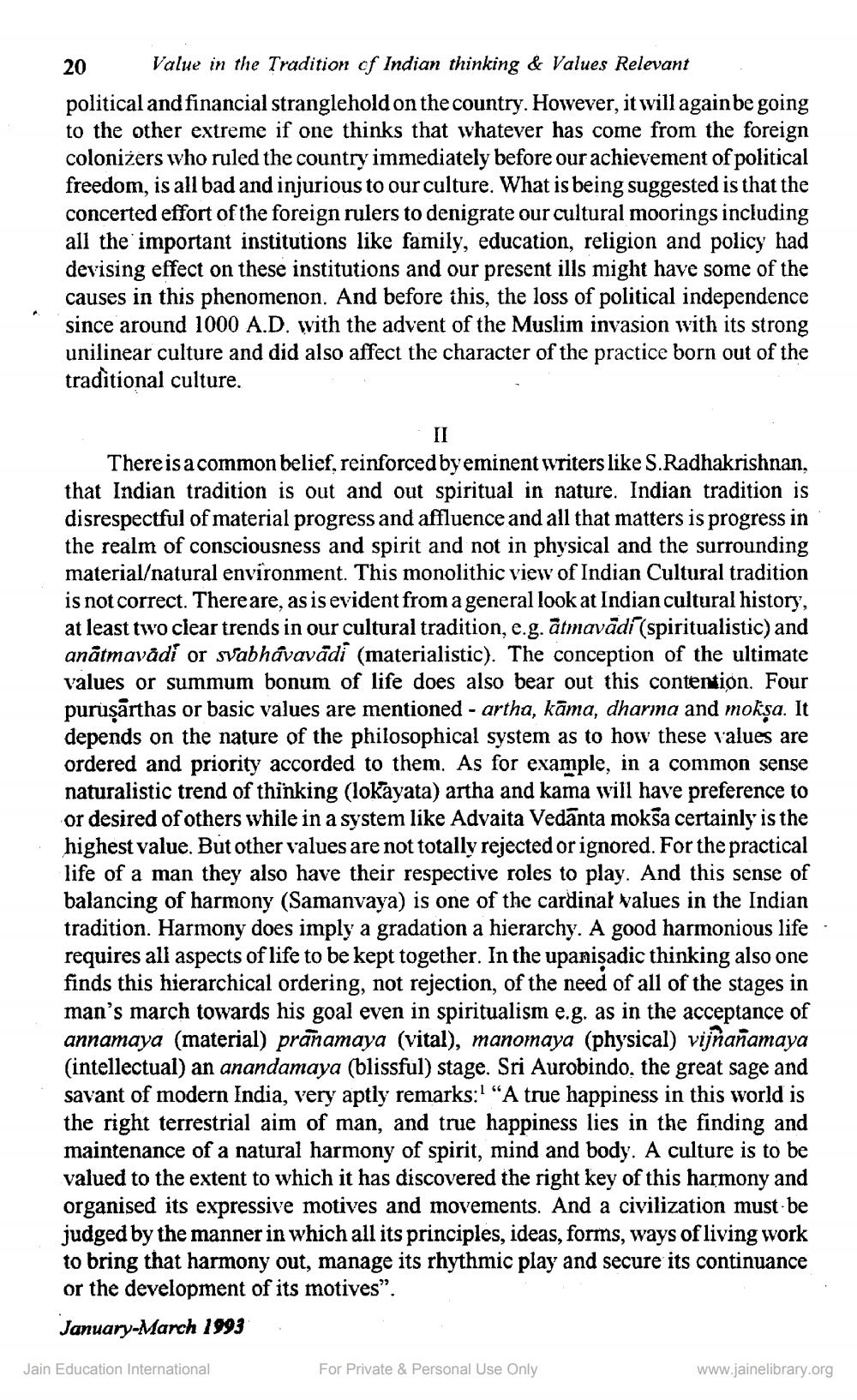________________
20
Value in the Tradition of Indian thinking & Values Relevant
political and financial stranglehold on the country. However, it will againbe going to the other extreme if one thinks that whatever has come from the foreign colonizers who ruled the country immediately before our achievement of political freedom, is all bad and injurious to our culture. What is being suggested is that the concerted effort of the foreign rulers to denigrate our cultural moorings including all the important institutions like family, education, religion and policy had devising effect on these institutions and our present ills might have some of the causes in this phenomenon. And before this, the loss of political independence since around 1000 A.D. with the advent of the Muslim invasion with its strong unilinear culture and did also affect the character of the practice born out of the traditional culture.
II Thereis a common belief, reinforced by eminent writers like S.Radhakrishnan, that Indian tradition is out and out spiritual in nature. Indian tradition is disrespectful of material progress and affluence and all that matters is progress in the realm of consciousness and spirit and not in physical and the surrounding material/natural environment. This monolithic view of Indian Cultural tradition is not correct. There are, as is evident from a general look at Indian cultural history, at least two clear trends in our cultural tradition, e.g. atmavādi (spiritualistic) and anātmavādi or svabhávavādi (materialistic). The conception of the ultimate values or summum bonum of life does also bear out this contention. Four puruşarthas or basic values are mentioned - artha, kāma, dharma and mokşa. It depends on the nature of the philosophical system as to how these values are ordered and priority accorded to them. As for example, in a common sense naturalistic trend of thinking (lokayata) artha and kama will have preference to or desired of others while in a system like Advaita Vedānta moksa certainly is the highest value. But other values are not totally rejected or ignored. For the practical life of a man they also have their respective roles to play. And this sense of balancing of harmony (Samanvaya) is one of the cardinal values in the Indian tradition. Harmony does imply a gradation a hierarchy. A good harmonious life requires all aspects of life to be kept together. In the upanişadic thinking also one finds this hierarchical ordering, not rejection, of the need of all of the stages in man's march towards his goal even in spiritualism e.g. as in the acceptance of annamaya (material) pranamaya (vital), manomaya (physical) vijnanamaya (intellectual) an anandamaya (blissfül) stage. Sri Aurobindo, the great sage and savant of modern India, very aptly remarks: “A true happiness in this world is the right terrestrial aim of man, and true happiness lies in the finding and maintenance of a natural harmony of spirit, mind and body. A culture is to be valued to the extent to which it has discovered the right key of this harmony and organised its expressive motives and movements. And a civilization must be judged by the manner in which all its principles, ideas, forms, ways of living work to bring that harmony out, manage its rhythmic play and secure its continuance or the development of its motives”. January-March 1993
Jain Education International
For Private & Personal Use Only
www.jainelibrary.org




